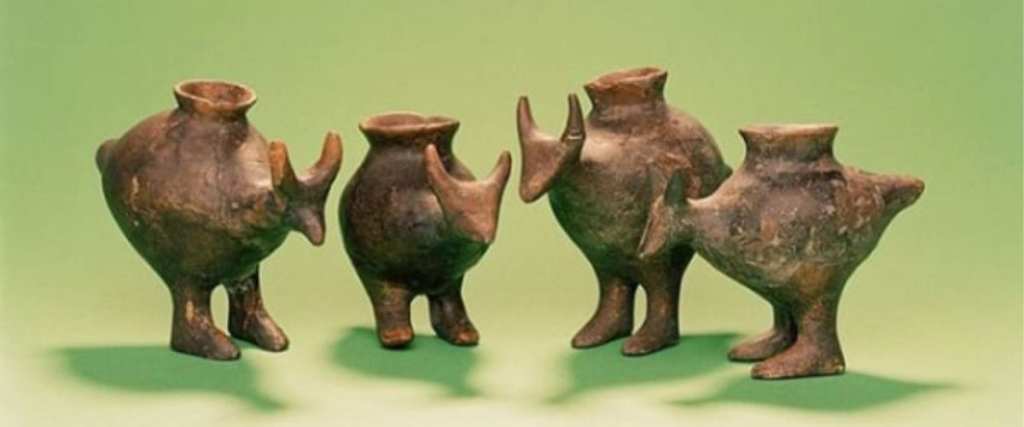If you’ve had kids recently, then you’re probably aware of the current push for all mothers to breastfeed. There are, of course, many reasons why mothers either choose not to or cannot for some reason breastfeed, and lucky for all of the beautiful babies out there, we have a slew of synthetic options these days.
It turns out that, wayyyyyyyyy back in the day, they did, too.
Well, maybe not a slew. But options.
https://www.instagram.com/p/B29Ru9MDPQb/
A team of scientists recently uncovered three clay vessels that resembled mythical, claw-footed animals, in the graves of children in Bavaria. They had narrow spouts, and the researchers believed they would have been used to feed babies animal milk as their mothers were attempting to wean them.
But unless they were able to somehow test the contents, though, they wouldn’t know for sure the bottles weren’t just used to feed babies their mother’s expressed milk, or to perhaps give them tinctures if they were ill.
“Bringing up babies in prehistory was not an easy task,” said Dr. Katharina Rebay-Salisbury in a statement. “We are interested in researching cultural practices of mothering, which had profound implications for the survival of babies.”
https://www.instagram.com/p/B2qCtDDAaSU/
So they tested the bottles.
The team used chemical and isotopic analysis to investigate the residue remaining inside these Neolithic vessels (which were dated to around 5000 B.C.E.). Their technique extracted lipids that absorbed into the pots when the milk was heated, and they found molecules that likely belonged to long-ago milk from cattle, sheep, or goats.
“This is a striking example of how robust biomolecular information, properly integrated with the archaeology of these rare objects, has provided a fascinating insight into an aspect of prehistoric human life so familiar to us today,” said Richard Evershed, another scientist on the team.
The babies could have been fed the animal milk in place of their mother’s milk, or it could have been used to wean them onto other foods. Other studies of the time period have found evidence that babies were weaned, but only could provide the approximate age of the baby at weaning, not how or with what.
“These very small, evocative vessels give us valuable information on how and what babies were fed thousands of years ago, providing a real connection to mothers and infants in the past,” sums up lead author Dr. Julie Dunne.
https://www.instagram.com/p/B3RhMRBIO7N/
It also proves that people in the area at that time had domesticated animals and likely had established farming practices, since there would have been no other way to obtain the milk.
Access to animal milk improved nutrition and increased birth rates in many parts of the world.
So, now you know. No matter how popular nut milk gets, if you feed your kiddo animal milk, you’re following a long, and grand, human tradition.






